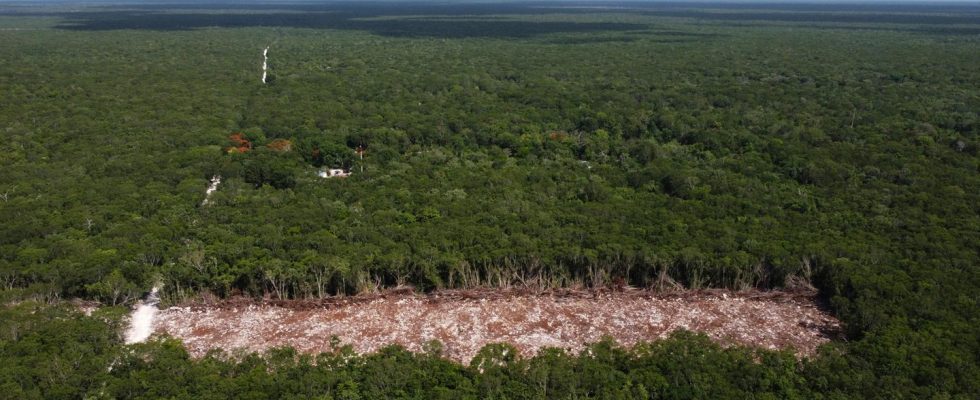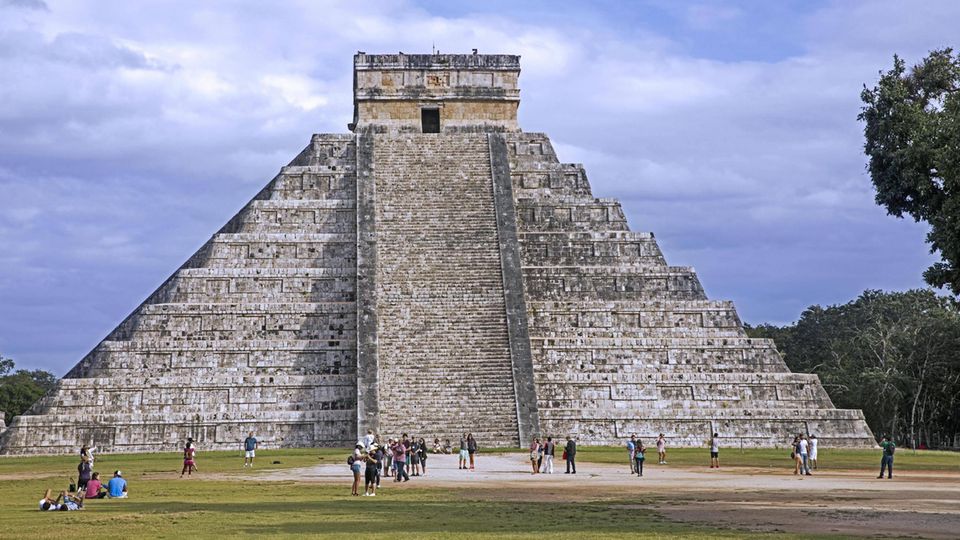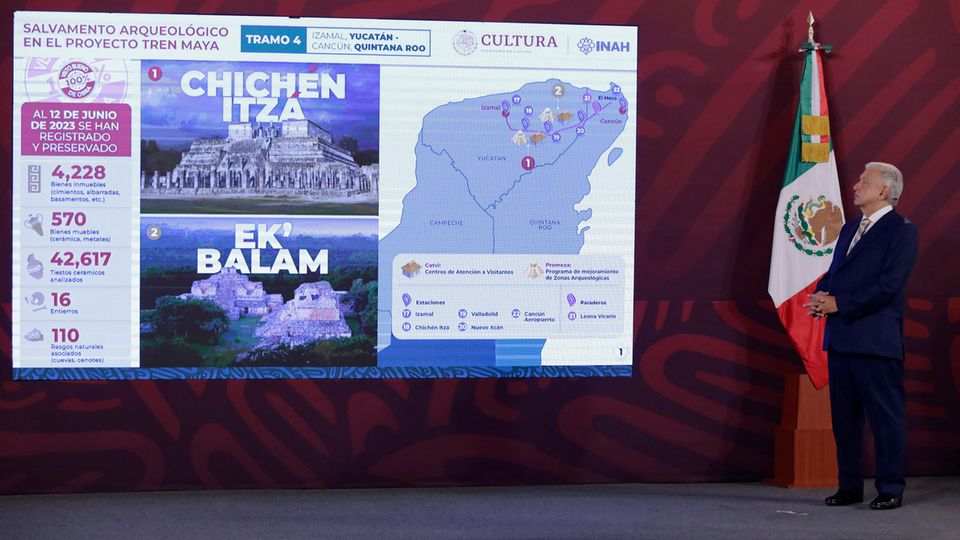Beach, ruins, jungle: all of this can be found along the route of the new tourist railway in Mexico. Environmentalists criticize the mammoth project on the Yucatán Peninsula. A German tour guide documents the damage.
Cave explorer Roberto Rojo knows the jungle well, but he doesn’t like what he’s currently seeing on Mexico’s Yucatán Peninsula. A long, deforested path runs through the jungle south of the holiday resort of Cancún. Thousands of large building pillars penetrate the ground every 15 meters. A tourist train will soon be traveling through the rainforest.
After three and a half years of construction, the first part of the 1,554 kilometer long “Tren Maya” rail network is scheduled to open. “The Maya Train will bring economic and social development to the Southeast,” promises President Andrés Manuel López Obrador. The train is intended to transport millions of tourists through the Yucatán Peninsula.
However, at the dusty construction site near Playa del Carmen, Rojo only sees destruction. López Obrador’s megaproject is cutting up the jungle and causing irreversible damage to the ecosystem, says the biologist and activist. “Down there is the aquifer on which all the plants, animals and people in the region depend.”
The train will initially run between San Francisco de Campeche on the Gulf of Mexico and Cancún in the Caribbean. The route is 473 kilometers long and partly runs along a former railway line. By the end of February, the entire network is expected to be complete with 34 stops in five states, including the most controversial sections through karst and rainforest.
German travel guide documents the damage in Mexico
Elias Siebenborn from Hainichen near Chemnitz has lived in the region for twelve years and works as a tour guide. In his free time he documents the effects of “Tren Maya”. With a GPS device, he places himself in the middle of the wilderness and flies his drone over the dense vegetation to the railway route. “You can see it here,” he said, showing the live footage from the drone: a kilometer-long path cuts through the lush green of previously untouched nature.
The German has already documented 121 small, medium and large underground caves along the railway line between Playa del Carmen and Tulum. “I used to go into the jungle to photograph birds,” he says. But when construction began, he started noticing the damage. “I never imagined how extreme that was.” Underground rivers flow through the cave system to the sea.
Mayan pyramid of the ancient site Chichén Itzá is one of the symbols of Yucatán
© imagebroker / Imago Images
The Selva Maya in Mexico, Guatemala and Belize is the largest rainforest area in the Americas after the Amazon. There, the Maya civilization once built powerful cities like Chichén Itzá. The tourist train will connect numerous ruin sites at a maximum speed of 160 kilometers per hour. The tracks are also intended for normal passenger and freight trains.
Project runs under military control
Manuel Andrew has high expectations. The 48-year-old works as a porter in a hotel near the future train station in Cancún. “Communities that had been forgotten will now see a boost from tourism because the train will stop there,” he says. Local residents would be able to sell their crafts directly to tourists or work in the hotels. “What else are the opponents of the train proposing to help people move forward? If they come up with another project that creates economic opportunities without harming the rainforest, I’ll join in too.”
The cost of the military-managed Maya Train has tripled to 500 billion pesos (27 billion euros) since construction began. European companies are also involved in the project. A subsidiary of Deutsche Bahn was commissioned with consulting tasks. The armed forces are also building six hotels, one of which is in the Calakmul Biosphere Reserve, where there are archaeological ruins. Some of the last jaguars in Mexico live there. Community land areas have been expropriated or bought up, and the real estate business is booming.
Mexican President López Obrador is proud of the project – so proud that he had it placed under military protection
© NurPhoto / Imago Images
No other country in the world has implemented such a large railway project in such a short time, says Mexican President López Obrador. His critics agree with him on this point: the construction was carried out too quickly, with a lot of improvisation and without the mandatory environmental protection reports, says Aarón Hernández from the Mexican Center for Environmental Law (CEMDA) in Cancún.
As there were more and more complaints against the project, the left-wing nationalist head of state declared the Maya train a matter of national security under the control of the military so that it could not be stopped. The project also led to divisions within communities. Human rights activists also criticize the militarization of the region.
“New border with the United States”
There is a good atmosphere in Mérida, the capital of the economically developing state of Yucatán. The city, which is on the first route of the train, is preparing for more tourists. The paving of the streets will be renewed, house facades will be given a new coat of paint and a gastronomic corridor will be built. The state with Mayan communities and haciendas is considered the safest in Mexico.
Tacos, tequila, tattoos
Of Desert Coyotes and the Last Mayans: An Adventure Journey to the Real Taste of Mexico
But the development plans are not limited to tourism. According to Governor Mauricio Vila, Yucatán wants to become Mexico’s “new border with the USA” – in an economic sense. A port on the Gulf of Mexico is being expanded for the export of goods, and new industrial parks are being built. The Maya Train rail network is linked to another project of the López Obrador government – the industrial Interoceanic Corridor between the Pacific and the Atlantic.
The Maya train is part of an economic plan that is being implemented at the expense of natural resources, people and their culture, says activist Rojo in Playa del Carmen. “Some people think we live from tourism. But we live from nature, which attracts tourists. If we ignore nature, we will have neither tourism nor nature and therefore no income.”



